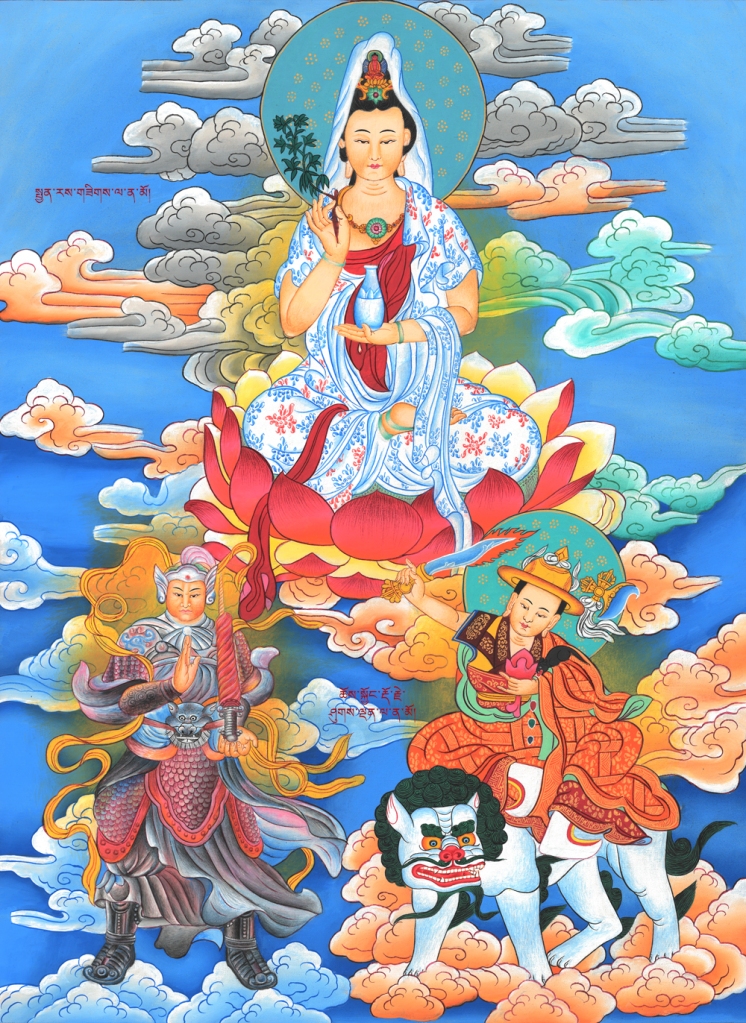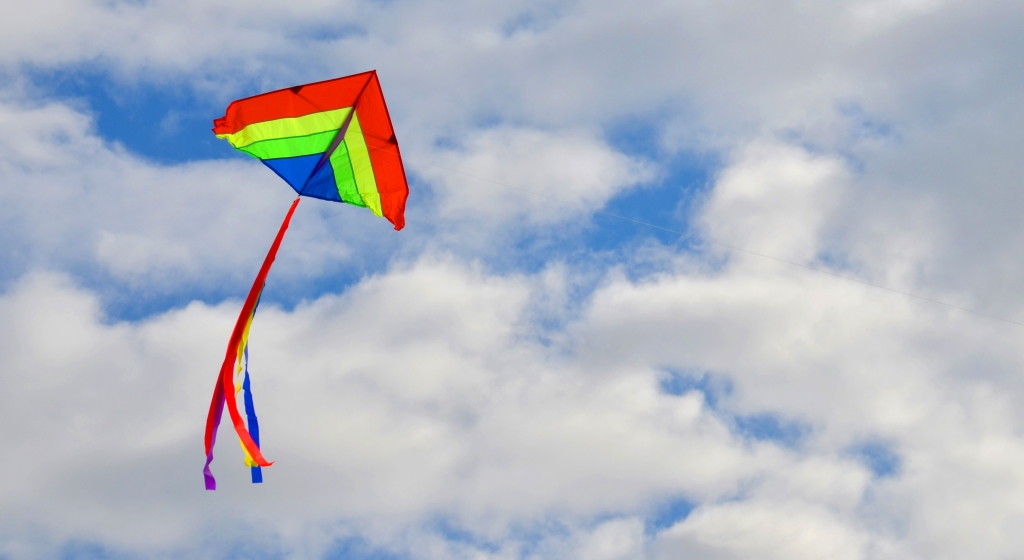We have entered the mini-season of Clear and Bright, which is the fifth mini-season of the year. Each mini-season contains three micro-seasons. The micro-seasons contained within this mini-season are:
- The Swallows Arrive (April 04 – April 08)
- Geese Fly North (April 09 – April 13)
- The First Rainbow Appears (April 14 – April 20)
These seasons were established in 1685 by Japanese astronomer Shibuka Shunkai and are specific to Japan. However, just because the calendar focuses on Japan doesn’t mean it isn’t applicable to others. No matter where you live you can use these seasons as a starting point for your personal exploration of the world around you.
At this time of year, the sky seems a little brighter and the sun feels a little warmer. With this shift in temperature and increased sunlight, people are drawn outdoors. In China, this time of year is also known for the Qingming Festival and outdoor activities like Taqing and kite flying.
Qingming Festival
The Qingming Festival is also known as Tomb-Sweeping Day, Chinese Memorial Day, or Ancestor’s Day.(1)
Qingming, when translated to English, means “clearness” and “brightness”.(2)
Qingming is also the name for the fifth solar term of the 24 Season Chinese calendar. However, it quickly became linked to ceremonies to honor the dead.
In the year 732, Emperor Xuanzong of the Tang Dynasty declared that the first day of the Qingming solar term was the time for all people to pay formal respects to their ancestors. This declaration solidified Qingming as not only the beginning of the mini-season but also a day for remembrance.
Why tomb-sweeping?
The concept of tombing sweeping is linked to Confucius. Chris Buckley tells us that the process of cleaning and maintaining an ancestor’s gravesite is “an act reflecting Confucius’ teachings of loyalty to family and tradition.”(3) Besides cleaning the gravesites, people also bring offerings of fruit, flowers, incense, tea, wine, and willow sticks.(2,3)
Willow Sticks
Willow sticks are considered magical talismans and have the ability to ward off evil spirits. This tradition is rooted in Buddhism as the Goddess of Mercy, known as Guan yin or Kuan yin, is often pictured in a white robe with a vase and a willow branch.

The vase in this image contains pure water, which is the “nectar of life, compassion, and wisdom.”(4) While the willow branch is used to sprinkle the water to bless the people with spiritual and physical health.(4)
There is an old Chinese saying that is used during the Qingming Festival that says: “Put willow branches up on gates; drive ghosts away from houses.”(3)
Qingming, Taqing, and Flying Kites
Besides the act of cleaning graves, people also participate in Taqing and Kite Flying during this time of year.
Taqling (pronounced taa-ching) translates to mean “tread the green” or “spring outing”.(3) This spring activity is just what it sounds like. People go outside and enjoy the spring weather. Some people will go to parks for picnics, while others will fly kites.
Kite flying is another traditional activity of the Qingming Festival. What is special about kite flying during this time of year is that the kites are flown during the day and night. The kites that are flown at night often have small lanterns attached to the strings. These lanterns are said to look like twinkling stars in the night sky.(3)
Qingming in poetry
Du Mu was a poet, calligrapher, and politician that lived during the Tang dynasty (618-907 AD). He is known for writing lyrical quatrains. One of his most famous poems is titled “Qingming”.
A quick web search revealed many different translations for this poem, and sometimes it is hard to know which translation captures the flow and essence of the original poem. I chose to use Shirley Li’s translation here.(6)
“Qingming” by Du Mu
A drizzling rain falls on the Mourning Day. Pedestrians are broken-hearted on the way. Where can a tavern be found to drown their sorrows? There a cowboy points to a hamlet amid apricot flowers.
Shirley Li also provides us with a poem by Wu Weixin titled “Sightseeing in Su Causeway”. Wu Weixin was a poet of the Song Dynasty (960–1279), and this poem references the Qingming Festival.
“Sightseeing in Su Causeway” by Wu Weixin
Pear petals fall in a slight wind on Qingming Day, Men and women, old and young, take a trip to look for spring. When the wonderful music and songs ended at the sunset, Golden orioles fly through thousands of willows freely.
I also did a quick search to see if I could find any haiku about fly kites. David G. Lanoue translated the following haiku by Kobayashi Issa on his website Haiku Guy
runaway kite! the dog also eyes it restlessly -Issa
imitating his master the dog watching the kite -Issa
Issa actually has many haiku about flying kites. Part of the reason for this is that kite flying is a part of the Japanese New Year’s celebrations. So as far as the kigo, or seasonal reference, this would place these haiku closer to early February than early April. Nevertheless, I thought that would be a good addition to today’s conversation about Qingming.
Resources:
- “Qingming Festival”; Wikipedia
- Ruby Zhao; “Qingming Festival 2022”: ChinaHighlights.com
- Chris Buckley; “China’s ancestor day leads Confucian revival”: Reuters.com
- “Guan Yin”: Nations Online
- “Du Mu”; WIkipedia
- Shirley Li: Qingming Festival Poems”; China Educational Tours
*Kigo- is a word or phrase used in traditional haiku that links that poem to a particular season. Ferris Gilli has a great essay called “Seasoning Your Haiku” for those who want to dive deeper into the kigo.
Want to support our work? Visit the Naturalist Weekly bookstore and browse our curated lists of books on poetry and haiku. Or pick up a gift cards that can be used throughout the store.
Naturalist Weekly also accepts donations for coffee and journals. Your support will keep both the coffee and content flowing.

Interesting….perhaps the grave tidying is an innate, transcultural tradition. My brother and I are meeting up tomorrow to put palm crosses on our parents’ and grandparents’ graves.
That is really great observation. You are probably correct about many cultures focusing on the tidying of gravesights and burial grounds when spring arrives. I didn’t even think about how close these traditions were to Palm Sunday. Thanks so much for pointing that out!
The photo kite flying so beautiful and the written lines inspiring 🌷🙏♥️👍🏻
Hi Thattamma, That is a great photo, isn’t it! I am glad that you enjoyed today’s post. Thank you for your continued support.
Sure very beautiful kite 👍🏻🙏🌷and enjoyed your post 😍
Thank you for sharing 🌷🙏🌷
this was such a lovely post Mark and I loved the feeling and ceremony of each line. Beautiful poems shared and love the timeline of the birds flying and the rainbow shining! 💖💖
Hi Cindy, Thanks so much for the comment.. I know I am very much looking forward to the weather breaking and brighter skies. I might even take up kite flying this year! Thanks again. Talk soon,
Fascinating! I love learning about the mini seasons and the Qingming festival. Tomb-sweeping and kite-flying – such wonderful opposing images, really kind of heavenly! Thanks for sharing this, Mark 🙂
Hi Sunra, Thank you for the comment! I am glad that you enjoyed this post. I think the best part of tracking the seasons like this is all the new things I am learning! It is a gift that I am very happy to have found.
You’re most welcome 🙂
Fascinating information about Chinese (and a bit of Japanese) culture. I was unaware of the Qingming Festival, although I knew the Chinese are very reverential toward their deceased ancestors. The poetry was startlingly good in its simplicity. Du Mu has some excellent imagery, as does Issa (as always). Thanks for including the poems. They really serve as a wonderful coda to the well-researched essays you write, Mark. I really enjoyed this one. 🙂
Hi Mike, This one was fun to research. I really like diving into the historical aspects of these seasons. And of course I have to include some Issa haiku! Issa wrote about everything it seems like. Thanks for the comment!